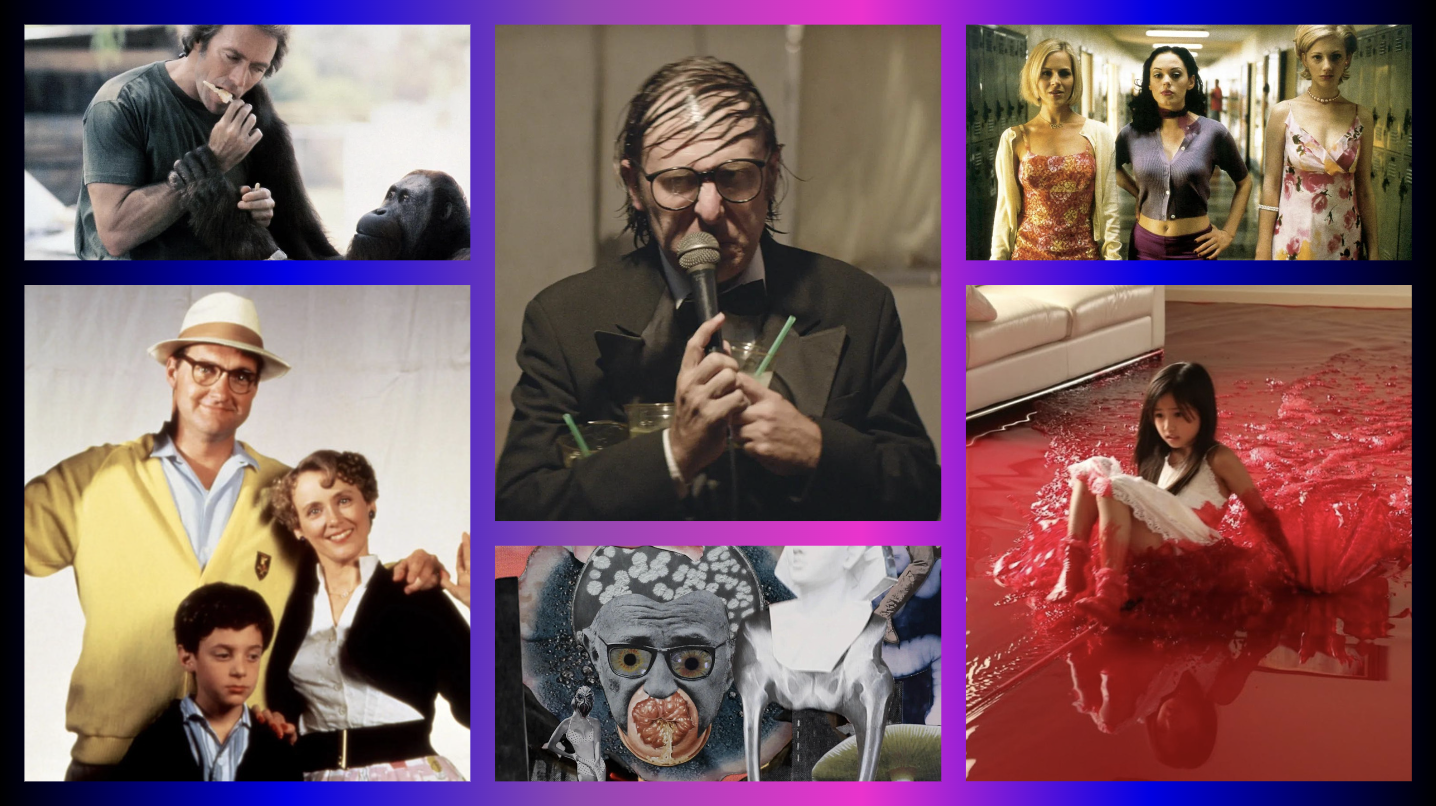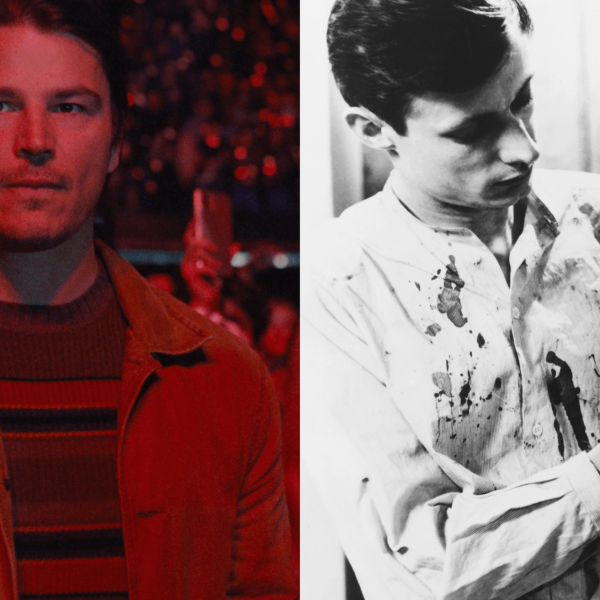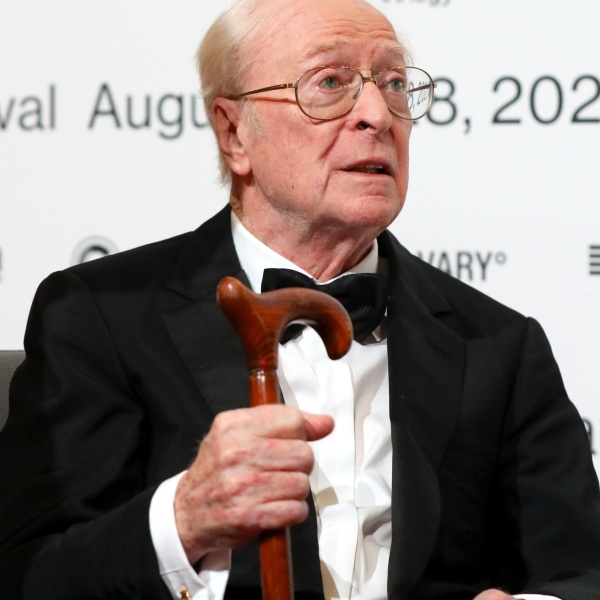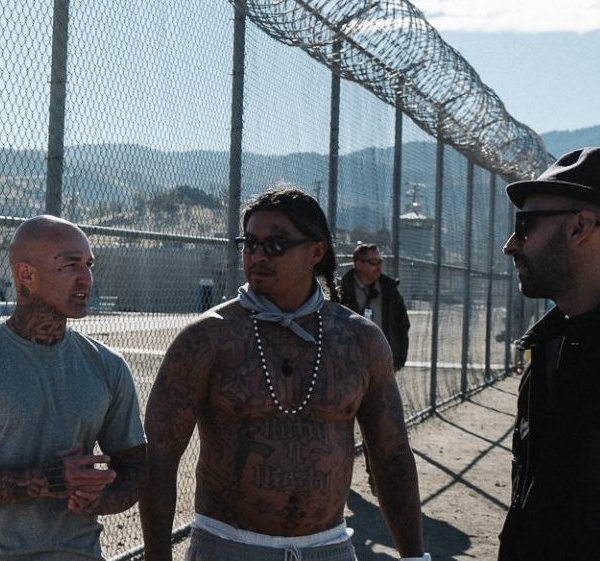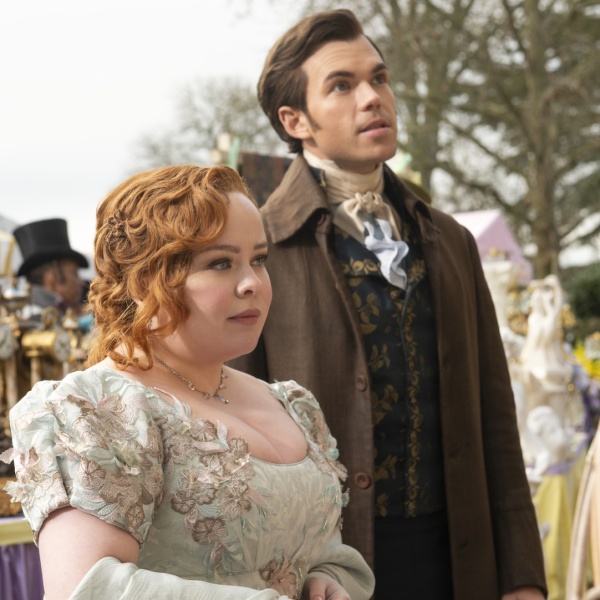
What do a pregnant Arnold Schwarzenegger, a pansexual soccer himbo, a horny orangutan (with a dubious grasp on consent), and an impeccably dressed mean girl played by Rose McGowan have in common? In addition to being our dream blunt rotation, they’re the kinds of cinematic heroes you’ll only find at IndieWire After Dark.
Our weekly column exploring the funkiest fringe cinema is for anyone who can’t bring themselves to sit through one more midnight screening of “Rocky Horror.” Every Friday night at 11:59 p.m. ET, we take a feature-length beat to discuss an unapologetically bold movie that we fear is falling through the cracks in the age of streaming. From boundary-pushing new works to insane misfires of yesteryear, IndieWire After Dark is an ongoing reminder that, yes, there is still something out there that you haven’t seen.
The idea of “midnight movie culture” often feels like a charmingly anachronistic relic from a time when a monoculture created a clearer distinction between what was and wasn’t acceptable in pleasant society. But while the omnipresence of streaming has ensured that weird movies are available to watch at all hours of the day, the saturation of content and paralysis of choice makes a thriving fringe cinema culture more necessary than ever. As yesterday’s movies shuffle through a revolving door of streaming apps while running the risk of vanishing from the internet, IndieWire After Dark seeks to highlight the cinematic oddities that we think are unapologetically worth preservation.
Our definition of a fringe cinema encompasses a variety of genres, from masterful avant-garde works from arthouse directors to bloated studio disasters that make you question if a single person who worked on them had ever seen a movie. But every IndieWire After Dark selection is a film that swings for the fences and makes a sincere effort to show us something we haven’t witnessed before. Some achieved their goals and others missed gloriously, but every title embraces the idea that filmmaking is an art form that deserves to be pushed to its furthest possible extremes.
While every IndieWire After Dark movie holds a special place in our hearts, 12 have stood out as particularly worthy of preservation in the streaming age. Keep reading for our picks, carefully ranked by how much they embody the IndieWire After Dark ethos. This list will update as we keep pushing our sanity to the limit by forcing each other to watch the strangest movies that we can’t help but love.
-
1. “Pieces” (dir. Juan Piquer Simón, 1982)

Image Credit: Screenshot What it is: An utterly bonkers English-dubbed Spanish slasher movie that tries and fails to be a generic “Texas Chainsaw Massacre” knockoff. When a mother makes the mistake of confiscating her son’s pornographic jigsaw puzzles, she initiates a chain of trauma that results in him becoming a grown man who goes on a bloody chainsaw rampage in Boston. When nobody can discern the identity of the man wreaking havoc on college girls across the city, the cops enlist a college freshman with absolutely no police experience to help them crack the case.
Why it’s IndieWire After Dark: The poster for “Pieces” boasts one of the all-time great taglines in horror marketing history: “It’s Exactly What You Think It Is.” But while that really rolls off the tongue, it’s completely false. “Pieces” is a movie that confounds at every turn, filled with bizarre plot developments, strange attempts at humor and sexuality, and a kung-fu professor. Pair that with some genuinely fun kills and you’re left with a midnight movie for the ages. —CZ
‘Pieces’ Is the Bonkers ‘Texas Chainsaw Massacre’ Knockoff That Proves Pornographic Jigsaw Puzzles Have a Dark Side
-
2. “Donkey Skin” (dir. Jacques Demy, 1970)

Image Credit: Criterion Collection What it is: Jacques Demy’s adaptation of the classic French fairy tale about a princess who dresses as a donkey to avoid marrying her father is a Technicolor musical with some truly strange 1970s vibes. Taking place in an unnamed kingdom where nobody has any obligations besides hanging out with their face-painted servants and pilgrim-esque royal advisors, “Donkey Skin” is a 90-minute ode to scheming and daydreaming that results in a game of romantic musical chairs destined to produce the most awkward Thanksgiving of all time.
Why it’s IndieWire After Dark: What are midnights for, if not fantasizing about sitting on a cat-shaped throne being waited on by blue men while listening to the distant sounds of a traveling salesman singing about the healing power of his gazelle milk? “Donkey Skin” sometimes feels like a sweet Rodgers & Hammerstein fairy tale musical (albeit one with lyrics about incest producing “tainted offspring”) and resembles a raunchy Shakespearean comedy of manners at others, but it never fails to be an entertaining ode to the horniness that can be found in far away lands. —CZ
‘Donkey Skin’ Uses the Power of Song to Remind the World That Incest Is a Massive Bummer
-
3. “Any Which Way You Can” (dir. Buddy Van Horn, 1980)

Image Credit: Warner Bros. What it is: The bigger, wackier, and infinitely hornier of Clint Eastwood’s two monkey movies sees the “Unforgiven” star breaking into a zoo to tranquilize a sexual partner for his pet orangutan, Clyde. And that might not even be one of the top five strangest things that happens in this gonzo sequel to “Every Which Way But Loose,” which centers around Philo Beddoe (yep, we’re all agreeing to pretend that sounds like a real name) taking a trip to Jackson Hole for the most well-publicized underground boxing match in history.
Why it’s IndieWire After Dark: “Any Which Way You Can” is the epitome of an unintentional masterpiece. What began as an ill-advised vanity project and an excuse to string a bunch of country music cameos together now feels like one of the most entertaining films of Eastwood’s career. Everything from the static acting to the needless sexual tension between man and ape to the fact that a real snake fights a real ferret (not a mongoose!) melds together to form a glorious symphony of weirdness that’s best enjoyed after midnight. —CZ
‘Any Which Way You Can’ Has More Monkey Sex Scenes Than Every Other Clint Eastwood Movie Combined
-
4. “Entertainment” (dir. Rick Alverson, 2015)

Image Credit: Magnolia Pictures/Courtesy Everett Collection What it is: Gregg Turkington’s noxious anti-comic Neil Hamburger gets the feature film treatment in Rick Alverson’s portrait of a broken performer trying to survive in small-time entertainment purgatory. When he’s not clearing his throat and cracking “jokes” about Madonna’s children sucking dog food out of her breasts, the comic slowly drifts aimlessly between dive bars and tourist attractions as he tries to reconnect with his daughter while holding onto what’s left of his sanity.
Why it’s IndieWire After Dark: Turkington’s brilliant subversion of stand-up comedy tropes has been the stuff of legend among comedy geeks for decades. But by teaming up with Alverson and co-writer Tim Heidecker, he was able to craft a character study that humanizes the Neil Hamburger persona without sacrificing any of the vile humor that made him so beloved. You’ll never look at Crosby, Stills, and Nash the same way again. —CZ
‘Entertainment’ Built a Greek Tragedy Around a Phlegm-Spewing, Hairspray-Coated Anti-Comic
-
5. “The Point” (dir. Fred Wolf, 1971)

Image Credit: Screenshot: Freevee What it is: Adapted from Harry Nilsson’s pop-rock album of the same name, “The Point” marks IndieWire After Dark’s first adventure into the wild and wonderful world of children’s entertainment. Director Fred Wolf’s deeply philosophical cartoon/animated TV special is narrated by Ringo Starr and features the voices of TV’s Bobby Brady (Mike Lookinland) and that kid from the “How Many Licks Does It Take?” Tootsie Pop commercial (Buddy Foster). This throwback tells the story of 8-year-old Oblio: a round-headed little boy living with his parents and dog in a conformist, capitalist hellscape called The Pointed Village.
Why it’s IndieWire After Dark: No matter how all-encompassing the cinematic Venn diagram, “midnight movie” and “fun for the whole family” rarely overlap. But this unique treasure from 1971 can be fully enjoyed by weirdos of any age. What’s the point? What’s your point? Does everything have to have a point? These are the abstract questions posed to Oblio when he’s exiled from his hometown and forced to consider society at large. Nilsson reportedly dreamed up “The Point” while on acid… and reader, it shows! —AF
Cuddly Rock Men, Absent Triangular Fathers, and Ringo Starr Are Here to Soothe Your Inner Child in ‘The Point’
-
7. “Jawbreaker” (dir. Darren Stein, 1999)

Image Credit: ©TriStar Pictures/Courtesy Everett Collection What it is: Rose McGowan absolutely eats as the villainous Courtney Shayne in “Jawbreaker”: Darren Stein’s fabulously noxious mean girl movie from 1999. When Courtney and her two closest minions (Rebecca Gayheart, Julie Benz) “kidnap” their best friend/shoe-in for prom queen Liz Purr (Charlotte Ayanna), a seemingly harmless prank leaves the teens with a dead body in the trunk of their convertible. With Carol Kane’s Principal Sherwood and Pam Grier’s Detective Vera Cruz breathing down the girls’ necks, the so-called Flawless Four — now three! — attempt to escape responsibility. But the tables turn when mousy Garden Club President Fern Mayo learns the truth, and Judy Greer sets in on the most underrated performance of her career.
Why it’s IndieWire After Dark: We recommended “Jawbreaker” as a chaser to Greta Gerwig’s “Barbie,” but you can enjoy this exquisitely color-blocked, queer-coded cult classic anytime. Just ask the countless twenty and thirty-something women who accidentally saw it aired on ABC in the middle of the day. Fearlessly fun in its spiky satirization of young womanhood, “Jawbreaker” is the epitome of a midnight movie made for the girlies: sexy, scary, sardonic, and stylish. You just can’t get a makeover montage-turned-“Bride of Frankenstein” homage off the rack. And that popsicle blow job scene? One of a kind. —AF
‘Jawbreaker’ Is the Perfect Candy-Coated ‘Barbie’ Chaser — and a Venomous Midnight Movie Snack
-
8. “Junior” (dir. Ivan Reitman, 1994)

Image Credit: Walt Disney Co./Courtesy Everett Collection What it is: Arnold Schwarzenegger and Danny DeVito tried to repeat the success of “Twins” with a bizarre comedy about a scientist who develops an experimental fertility drug and tests it on himself. What’s supposed to be a brief experiment turns into a nine month pregnancy that nearly concludes with the future governor of California giving birth through his ass.
Why it’s IndieWire After Dark: “Junior” has everything you could possibly want in a midnight movie — along with quite a few things that nobody asked for. You have a beloved actor going against type (Arnold never gave birth in any of the “Terminator” movies), bodily mutations (nobody gives birth through their colon ever), and some strange sexual politics (Schwarzenegger still gets laid while he’s eight months pregnant living in drag at a nunnery). The day we can’t enjoy shit like this together will be the day the midnight movie officially dies. —CZ
It’s Time to Revisit Arnold Schwarzenegger Nearly Giving Birth Through His Ass in ‘Junior’
-
9. “Kuso” (dir. Flying Lotus, 2017)

Image Credit: Everett Collection / Everett Collection What it is: Flying Lotus’ directorial debut is a surreal series of vignettes set around Los Angeles after a deadly earthquake reduces the city to rubble. While best remembered as the movie that shocked Sundance by showing George Clinton shitting out a giant insect and a sentient boil performing fellatio, the nauseating film is a nuanced piece of media criticism that explores the way television distorts our perception of tragedies — and how utterly unprepared Los Angeles citizens are for a natural disaster.
Why it’s IndieWire After Dark: Plenty of filmmakers are able to create shocking images — though it’s hard to think of a single film that crams more gross-out weirdness into 90 minutes than “Kuso.” But what separates great midnight movies from their wannabe counterparts is their ability to justify their weirdness with substance. Flying Lotus and his murderer’s row of avant-garde collaborators offer such a distinct vision that we’re more interested in what the anuses are saying than the fact that they’re talking. It’s the rare gross-out movie that gets richer each time you watch it. —CZ
‘Kuso’ Is Pure Cinematic Jazz That Just So Happens to Include Full Frontal Nudity and Talking Boils
-
10. “Diamantino” (dir. Daniel Schmidt and Gabriel Abrantes, 2018)

Image Credit: ©Kino International / Everett Collection What it is: After missing the most important shot of his career at the World Cup, a sexy-but-dim-witted Portugese soccer player tries to rebuild his life by adopting a refugee son. What he doesn’t know is that his “son” is a female secret agent in a lesbian relationship trying to infiltrate his life before a nationalist group can turn him into their inadvertent figurehead. Oh, there’s giant puppies too.
Why it’s IndieWire After Dark: One of the beautiful things about midnight movies is their ability to blur the line between the arthouse and the grindhouse. It doesn’t matter if your film is composed like a stunning painting or hastily slapped together on a shoestring budget — if you’re weird enough, we’ll find you. “Diamantino” might have been a hit on the Croisette in 2018, but a wild plot about geopolitical polyamory and an elite himbo performance from Carloto Cotta make it more than worthy of midnight screenings. —CZ
‘Diamantino’ Is the Surreal, Anti-Nationalist Himbo Sports Cinema to Cure Your World Cup Blues
-
11. “The Saddest Music in the World” (dir. Guy Maddin, 2003)

Image Credit: ©IFC Films/Courtesy Everett Collection What it is: Guy Maddin’s dreamy black-and-white arthouse flick starring Isabella Rossellini as Lady Helen Port-Huntley, the Muskeg Beer Baroness of Depression-era Winnipeg. The beloved Canadian filmmaker transports audiences to a reimagined 1933 for a musical competition featuring a human-sized beer bath and contestants playing sorrowful songs brought from across the globe. Also starring Mark McKinney, Maria de Medeiros, Ross McMillan, and more.
Why it’s IndieWire After Dark: “The Saddest Music in the World” offers a singular seriocomic experience that simultaneously plays like a historical North American period piece and an artifact from another planet. Outrageous and yet self-aware, this is the best cinematic tale of a double-amputee turned Prohibition-era mogul ever made — no contest. —AF
Isabella Rossellini Is a Double-Amputee with Beers for Legs in ‘The Saddest Music in the World’
-
12. “Color Out of Space” (dir. Richard Stanley, 2019)

Image Credit: Courtesy Everett Collection What it is: Richard Stanley’s adaptation of H.P. Lovecraft’s cosmic horror story stars Nicolas Cage as the patriarch of a family who moves to his parents’ country estate in search of a simpler life. But their plans for pastoral tranquility are quickly upended when a meteor crashes in their yard, emitting an eerie magenta light that slowly possesses them all with unimaginable evils from deep within the unexplored corners of the universe.
Why it’s IndieWire After Dark: In addition to being a skillfull adaptation of an author whose works have long been considered unfilmable, “Color Out of Space” is a wild ride for midnight movie lovers. From Tommy Chong playing a squatter with a cat named G-Spot to Nicolas Cage’s myriad rants about the perils of alpaca maintenance, the film contains just enough oddities to stop you from completely drowning in existential dread. While Stanley has since been accused of abuse by his former partner and “Color Out of Space” screenwriter Scarlett Amaris, her stellar work on the film and SpectreVision’s commitment to devoting the film’s profits to anti-domestic violence charities makes this one still worthy of preservation in our book.—CZ
Nicolas Cage Goes to War with Magenta Mood Lighting, Mutant Alpacas, and Existence Itself in ‘Color Out of Space’
